As we enter the season of Lent, a period of reflection and preparation as we move towards Easter, many people will be giving consideration to what it is they will be giving up as a symbol of this figurative time spent in the wilderness with Jesus.
Someone much smarter than me once told me that just as important as giving something up is what it is we add in to our daily routine, as this is where we are then able to be formed by the fullness of Jesus’ ministry. Participation in Lent is meant to be a forming and reforming practice.
Back in the season of Advent I started what I called a Liturgical Watchlist, an opportunity to be intentional about working the films that I watch into my participation with the liturgy of the Church. My plan is to continue this through the season of Lent and the Celebration of Easter.
I chose 10 different films, each with a narrative interest in exploring the space between life and death that occupies our Ash Wednesday and Easter Sunday services. The films I chose I feel are ones that can help me navigate important Easter themes such as wilderness, sin, sacrifice and suffering, while also pushing me towards a greater understanding of the grace, forgiveness, hope and redemption that come with the promise of the Resurrection. Lent and Easter, which begins today with Ash Wednesday, is an opportunity to confront our brokenness and the brokenness that we see in this world. And then the invitation is to encounter Jesus as the one who brings healing and salvation by way of His ministry to and for us, which is expressed in the hope of this already but not yet reality we are being called to live into in the here and now. This is the Good News. As I attempt to see these films in the light of this amazing truth, I hope that they are able to open me up to this truth in new and amazing ways. My prayer and hope is the same for you in whatever it is that you are either giving up or adding in. And if you feel inspired, Lent and Easter is as good a time as any to consider all the ways that art can speak to Gods ongoing relationship with you, with us, and with the world. Feel free to drop in any of your film suggestions to the comment section as I’d love to build on this list for future years.
Here are the films I have chosen for myself, including a brief mention of how and why I see them fitting in with the themes of Lent and Easter.
Lenten Films
- A SIMPLE LIFE by Ann Hui
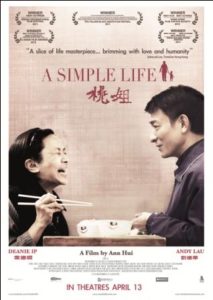
The film’s depiction of God and faith sneaks up on this story in some unexpected ways and when it hits it says something powerful about our common humanity and our common struggle. From dust to dust is what we reflect on during Ash Wednesday, positioning ourselves in equal need of grace, relationship, and meaning. This is where Christ finds us, in this space between death and life that bookends Ash Wednesday and Easter Sunday, beckoning us to follow Him into the wilderness in order to experience his restorative and sacrificial work. This is the same place that faith, hope, and love finds Ah Tao, an aging maid exiled by an illness and forced to live her remaining days in a nursing home. It’s a powerful reminder of the degree to which God ‘s grace reaches us through the person and work of Jesus.
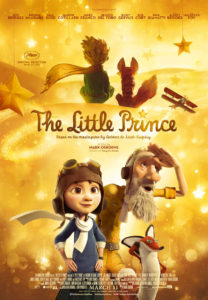 THE LITTLE PRINCE by Mark Osborne
THE LITTLE PRINCE by Mark Osborne
A perfect film for Lent given that it is all about the ways we tend to forget what is most important (love) in a world that lobbies for our attention and our allegiances every single day. It is about what it looks like to stop and remember love in a life occupied by false ambitions, be it versions of success, materialism, money and desire. It is a call to stop the business of our occupied lives and to make space for the light that is Jesus.
- THE SISTERS BROTHERS by Jacques Audiard
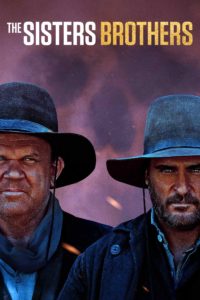
Given the prominence of the wilderness motif in Lent, this film’s unique spin on the wilderness idea provides a compelling mirror image to the genres ordinary visions of escape, nature and isolation. Normally Westerns are about escaping the city scape for the wilderness. The Sisters Brothers depicts our main characters looking to escape the wilderness in favor of city life and its grand promises of riches and aspirations. Not always certain where they are going, along the way they begin to learn about the cycles that trap us and the grace that finds us and calls us back to our true home, which for Christian’s is our life in Christ.
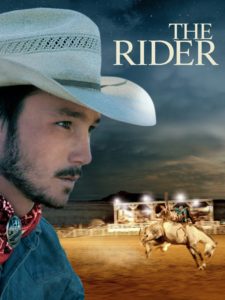 THE RIDER by Chloe Zao
THE RIDER by Chloe Zao
It is in relationship that we are able to recognize our shared struggle and our common brokenness, and this awareness offers us the necessary grace we need to move forward in our struggle and in our brokenness towards healing and purpose. Easter reminds us that in Jesus’ relationship to us we have been given and afforded the grace we need to begin to re-imagine our lives in the light of His restorative work.
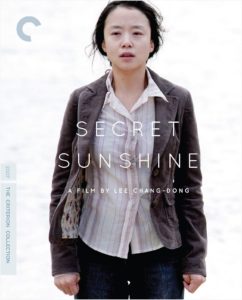 SECRET SUNSHINE by Lee Chang-Dong
SECRET SUNSHINE by Lee Chang-Dong
Near and dear to the heart of this film is making sense of God and suffering. As we walk with our main character through the darkness she faces, we see her question God, fight to make it through on her own strength, and subsequently find herself in a place of desperation, attempting to reconcile the depths of her pain and struggle with pictures and promises of God’s love and strength.
This is where it becomes a subsequent examination of the nature of forgiveness- of what it looks like to forgive and to be forgiven, and of how our understanding of grace and forgiveness fits with God’s redemptive purposes.
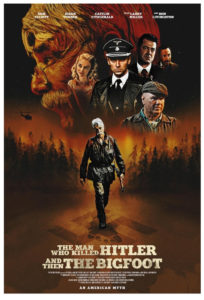 THE MAN WHO KILLED HITLER AND THEN THE BIGFOOT by Robert D. Krzykowski
THE MAN WHO KILLED HITLER AND THEN THE BIGFOOT by Robert D. Krzykowski
That we can be loved opens up our potential to freely love the world despite the losses and the forces that work against.
The film juxtaposes these questions by setting this moral question in a mirror image-beast and humanity. In blurring the lines of these two natures, it proposes potential for both to exist within creation and also within ourselves. It then challenges us to consider that Christ-given virtues such as compassion and love can exist within the corrupted nature of our natural world, reconciling beast and man through the Easter story to the greater vision and promise of the new creation.
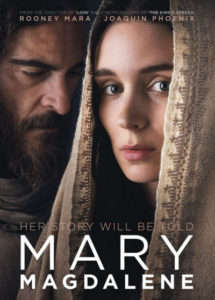 MARY MAGDALENE by Garth Davis
MARY MAGDALENE by Garth Davis
After seeing this film l couldn’t help but fall in love with Jesus all over again, and was compelled to see the grace he afforded a world that refused to see Gods love as a matter of equal measure. What is it we are all looking for? God’s underlying and undeniable freedom-giving love. And it just so happens that this love begins in the margins and extends outwards into the world.
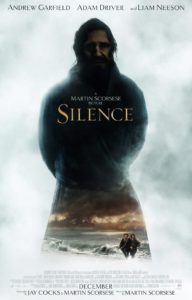 SILENCE by Martin Scorsese
SILENCE by Martin Scorsese
The mercy of Christ shows up in the unexpected places. The mercy of Christ also shows up when we least expect it, even in the unbearable silence.
 LOGAN by James Mangold
LOGAN by James Mangold
Employing the power of sacrificial language, Logan explores faith in a broken world, the promise of something better, and the journey of finding healing and restoration within this brokenness as the embodiment of that more hopeful reality. Might be one of the most powerfully spoken, Easter themed films I’ve ever seen.
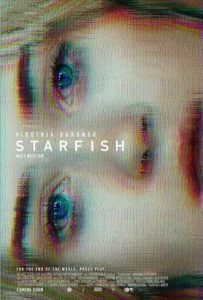 STARFISH by A.T. White
STARFISH by A.T. White
The imagery of the starfish stands as a defining symbol of regeneration, playing into spiritual ideas of forgiveness, restoration and redemption. In Easter we move from death to life in our celebration of the Resurrection, with Jesus the one who is making us and all things new again.

